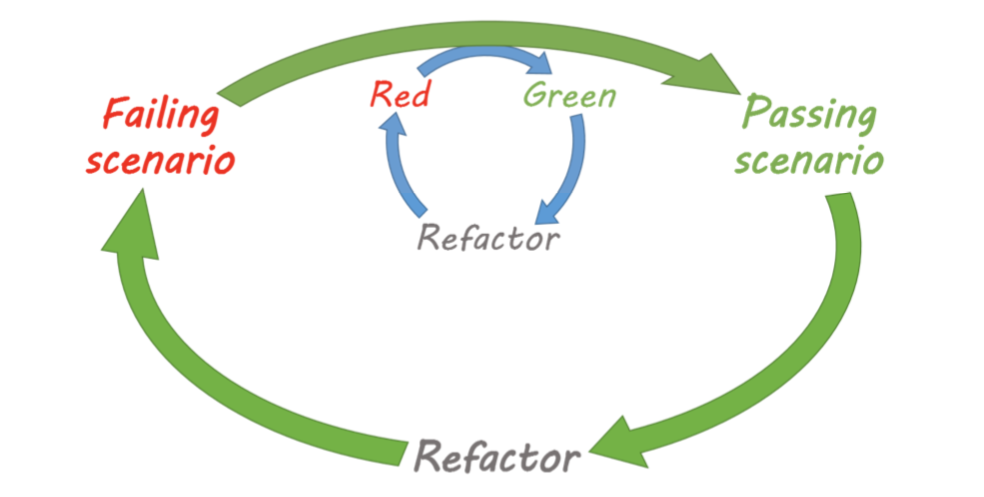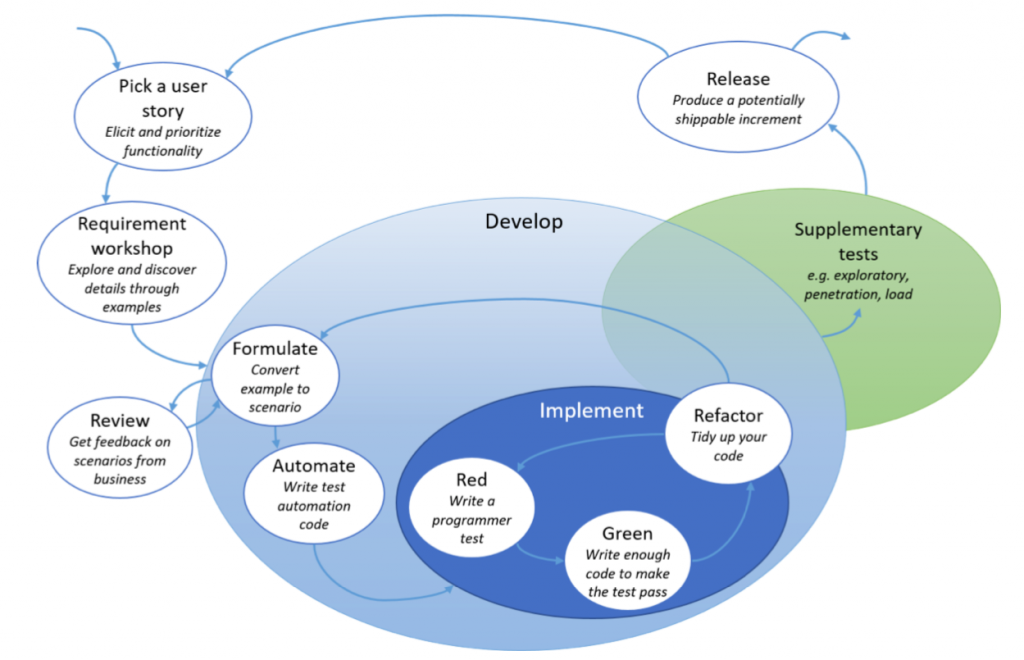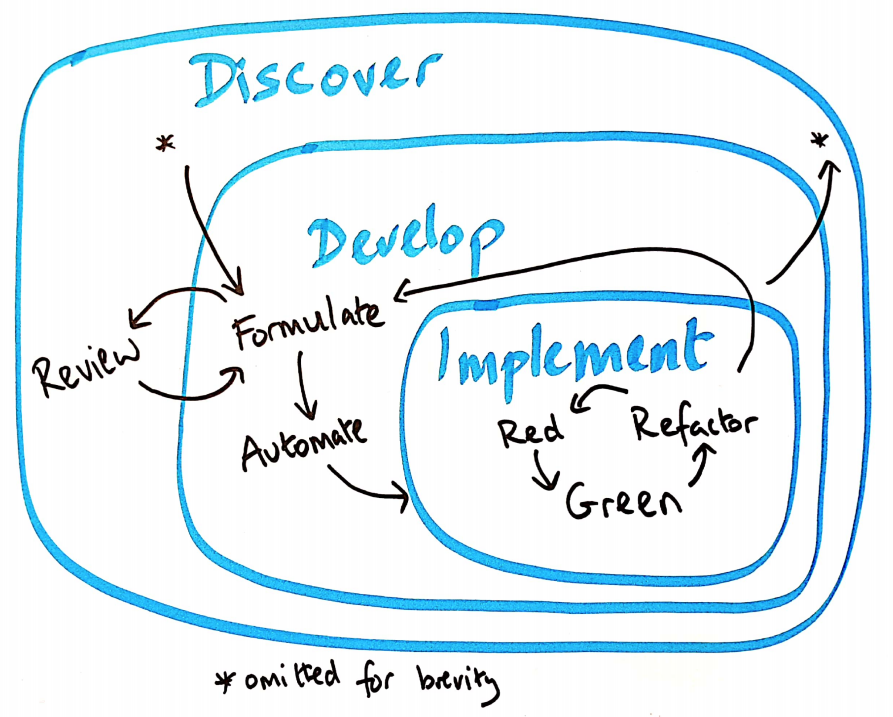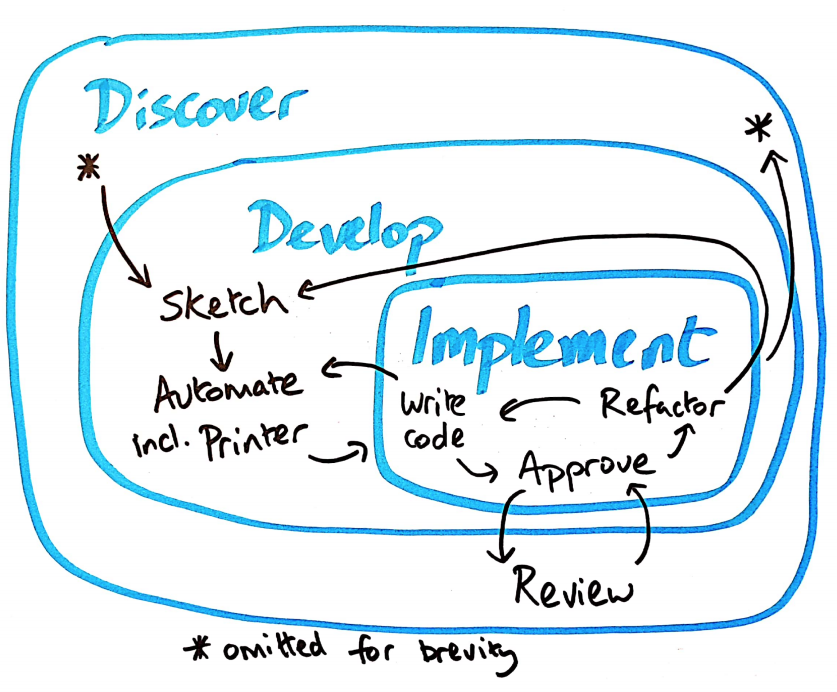By Emily Bache
Or: is Given-When-Then Compulsory?
In BDD you discover what software you should build through a collaborative process involving both software developers and business people. BDD also involves a lot of test automation and tools like Cucumber and SpecFlow. But what would happen if you used an Approval testing tool instead? Would that still be BDD?

Figure 4 from “Discovery – Explore behaviour using examples” by Gaspar Nagy and Seb Rose
I’m a big fan of Behaviour Driven Development. I think it’s an excellent way for teams to gain a good understanding of what the end-user wants and how they will use the software. I like the emphasis on whole team collaboration and building shared understanding through examples. These examples can be turned into executable scenarios, also known as acceptance tests. They then become ‘living documentation’ that stays in sync with the system and helps everyone to collaborate over the lifetime of the software.
I wrote an article about Double-Loop TDD a while back, and I was thinking about BDD again recently in the context of Approval testing. Are they compatible? The usual tools for automating scenarios as tests are SpecFlow and Cucumber which both use the Gherkin syntax. Test cases comprise ‘Given-When-Then’ steps written in natural language and backed up by automation code. My question is – could you use an Approval testing tool instead?
I recently read a couple of books by Nagy and Rose. They are about BDD and specifically how to discover good examples and then formulate them into test cases. I thought the books did a good job of clearly explaining these aspects in a way that made them accessible to everyone, not just programmers.
Nagy and Rose are planning a third book in the series which will be more technical and go into more detail on how to implement the automation. They say that you can use other test frameworks, but in their books they deal exclusively with the Gherkin format and Cucumber family of tools. What would happen if you used an Approval testing tool? Would it still be BDD or would we be doing something else? Let’s go into a little more detail about the key aspects of BDD: discovery, formulation, and automation.
Discovery
The discovery part of BDD is all about developers talking with business stakeholders about what software to build. Through a structured conversation you identify rules and examples and unanswered questions. You can use an ‘example mapping’ workshop for that discussion outlined in this blog post by Cucumber Co-founder, Matt Wynne.
Formulation
The formulation part of BDD is about turning those rules and examples of system behaviour into descriptive scenarios. Each scenario is made as intelligible as possible for business people, consistent with the other scenarios, and unambiguous about system behaviour. There’s a lot of skill involved in doing this!
Automation
The automation part of BDD is where you turn formulated scenarios into executable test cases. Even though the automation is done in a programming language, the focus is still on collaboration with the business stakeholders. Everyone is expected to be able to read and understand these executable scenarios even if they can’t read a programming language.
Double-Loop TDD
The picture shown at the start of the article from Nagy and Rose’s Discovery BDD book emphasizes the double loop nature of the BDD automation cycle. The outer loop is about building the supporting code needed to make a formulated scenario executable. Test-Driven Development fits within it as the inner loop for implementing the system that fulfills the scenarios. In my experience the inner loop of unit tests goes round within minutes, whereas the outer loop can take hours or even days.
Later in the book they have a more detailed diagram showing an example BDD process:

Figure 16 from “Discovery – Explore behaviour using examples” by Gaspar Nagy and Seb Rose
This diagram is more complex, so I’m not going to explain it in depth here (for a deep dive take a look at this blog post by Seb Rose, or of course read the book itself!). What I want to point out is that the ‘Develop’ and ‘Implement’ parts of this diagram are showing double-loop TDD again, with slightly more detail than before. For the purpose of comparing a BDD process, with and without Approval testing, I’ve redrawn the diagram to emphasize those parts:

How you formulate, automate, and implement with TDD will all be affected by an approval testing approach. I recently wrote an article ”How to develop new features with Approval Testing, Illustrated with the Lift Kata”. That article goes through a couple of scenarios, how I formulate them as sketches, then automate them with an approval testing tool. Based on the process described in that article I could draw it like this:

What’s different?
- “Formulate” is called “Sketch” since the method of formulation is visual rather than ‘Given-When-Then’. The purpose is the same though.
- “Automate” includes writing a Printer as well as the usual kind of ‘glue’ code to access functionality in your application. A Printer can print the state of the software system in a format that matches the Sketch. The printer code will also evolve as you work on the implementation.
- “Implement” is a slightly modified TDD cycle. With approval tests you still work test-driven and you still refactor frequently, but other aspects may differ. You may improve the Printer and approve the output many times before being ready to show the golden master to others for review.
- “Review” – this activity is supposed to ensure the executable scenario is suitable to use as living documentation, and that business people can read it. The difference here is that the artifact being reviewed is the Approved Golden Master output, not the sketch you made in the “Formulate” activity. It’s particularly important to make sure business people are involved here because the living documentation that will be kept is a different artifact from the scenario they co-created in the ‘discover’ activities.
But is this still BDD?
I’m happy to report that, yes, this is still BDD! I hope you can see the activities are not that different. Just as importantly, the BDD community is open and welcoming of diversity of practice. This article describes BDD practitioners as forming a ‘centered’ community rather than a bounded community. That means people are open to you varying the exact practices and processes of BDD so long as you uphold some common values. The really central part of BDD is the collaborative discovery process.
In this article I hope I’ve shown that using an approval testing approach upholds that collaborative discovery process. It modifies the way you do formulation, automation, and development, but in a way that retains the iterative, collaborative heart of BDD. For some kinds of system sketches and golden masters might prove to be easier for business people to understand than the more mainstream ‘Given-When-Then’ Gherkin format. In that case an approval testing tool might enable a better collaborative discovery process and propel you closer to the centre of BDD.
Conclusions
BDD is about a lot more than test automation, and Gherkin is not the only syntax you can use for that part. Approval testing is perfectly compatible with BDD. I’m happy I can both claim to be a member of the BDD community and continue to choose a testing tool that fits the context I’m working in. 🙂
If you’d like to learn more about Approval testing check out this video of me pair programming with Adrian Bolboaca.







